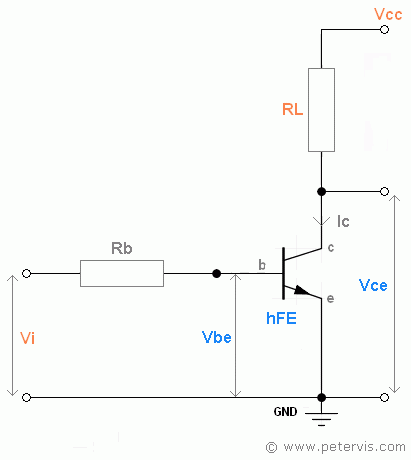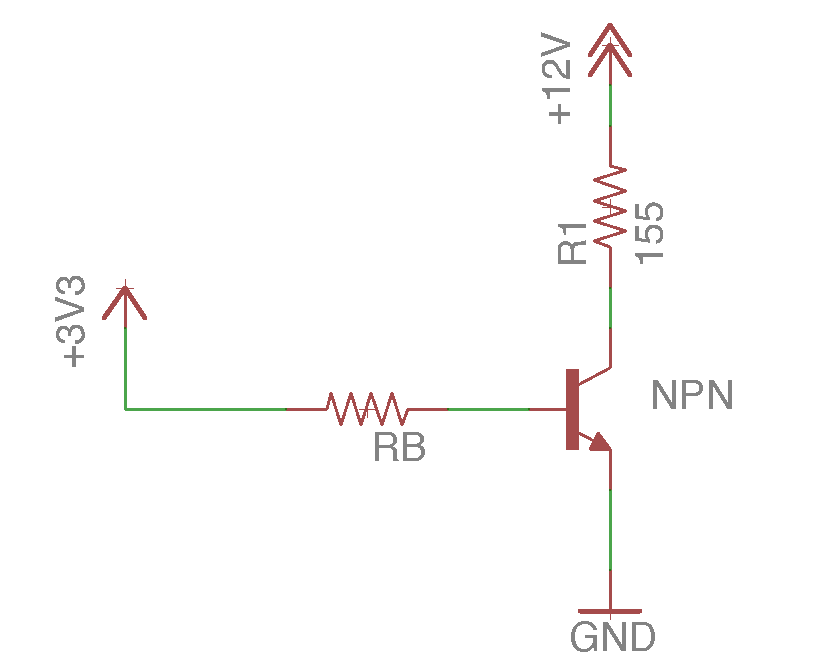Overview
We will calculate the value of Rb based on the following circuit:
Questions to Ask when Sizing
- Can your transistor handle the load through the collector? Does it exceed Ic(max)?
- Can the transistor handle supply voltage? Vcc > Vce (max) ?
- Find the worst case current gain during saturation. Ic
- Calculate the minimum base current. Ib
- Compare base current Ib max current your micro controller can deliver.
- Find worst case (highest) Vbe
- Calculate voltage drop across base resistor using Vbe and micro controller output
- Calculate required base resistor Rb.
- Calculate collector power dissipation.
Calculating the Rb Value
| Precondition | Value |
|---|---|
| Vcc | 12v |
| Vi | 3.3v |
| RL | 155Ω |
| NPN BC337 | |
| Vbe(sat) | 1.2v |
| Vce(sat) | 0.7v |
| hFE (@100mA) | 100 |
Calculations for Ic:
Ic = (Vcc-Vce)/RL = 11.3v/155Ω = 73 mA
Calculation for Vb
Vb = Vi - Vbe(sat) = 3.3 - 1.2 = 2.1v
Calculating using Ib=Ic/10 (*** Best Approach)
It is common to assume that base current is 1/10 of the collector current.
Ib = Ic/10 = 73/10 = 7.3mA
Rb = Vb/Ib = 2.1/0.0073 = 288 Ω
Confirm: Can the micro controller deliver Ib current required?
Tested with 220 Ω and it worked.
Calculating using hFE
To guarantee that the transistor operates in the saturation region, we multiply the base current by a factor of three.
hFE=100 (@100mA)
Ib = Ic/Hfe = 73/100 = 0.73mA
Rb = Vb/Ibx3 = 2.1/(0.00073x3) = 959 Ω
This would be the max value for Rb.
Calculating using the online calculator
hFE=100
Rb = 960 Ω
This would be the max value for Rb.
Formulas
Ic=(V-Vce)/RL
Ib=Ic/hFE
Rb=(Vi-Vbe)/(3*Ib)

